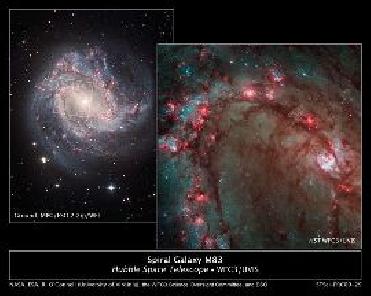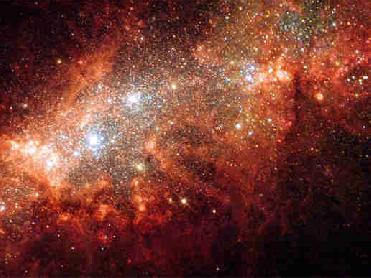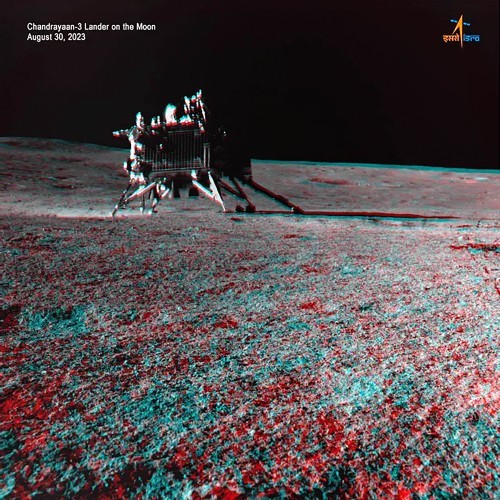
The image at right is Hubble's close-up view of the myriad stars near the galaxy's core, the bright whitish region at far right. An image of the entire galaxy, taken by the European Southern Observatory's Wide Field Imager on the ESO/MPG 2.2-meter telescope at La Silla, Chile, is shown at left. Image credit: NASA/ESA
WASHINGTON (BNS): A spiral galaxy, located 15 million light-years away in the constellation Hydra in the Southern Hemisphere, and exquisitely giving birth to hundreds of stars has been captured by NASA’s Hubble Space Telescope.
Nicknamed Southern Pinwheel, the M83 spiral galaxy is undergoing more rapid star formation than the Milky Way galaxy, especially in its nucleus.
The image, captured by Hubble’s Wide Field Camera 3 (WFC3), reveals in unprecedented detail the current rapid rate of star formation in this famous “grand design” spiral galaxy.
The newest generations of stars are forming largely in clusters on the edges of the dark dust lanes, the backbone of the spiral arms. These fledgling stars, only a few million years old, are bursting out of their dusty cocoons and producing bubbles of reddish glowing hydrogen gas.
The excavated regions give a colorful ‘Swiss cheese’ appearance to the spiral arm. Gradually, the young stars’ streams of charged particles blow away the gas, revealing bright blue star clusters. These stars are about 1 million to 10 million years old. The older populations of stars are not as blue.
A bar of stars, gas, and dust slicing across the core of the galaxy may be instigating most of the star birth in the galaxy’s core. The bar funnels material to the galaxy’s centre, where the most active star formation is taking place. The brightest star clusters reside along an arc near the core.
The image also shows the remains of about 60 supernova blasts – the deaths of massive stars – five times more than known previously in this region.
WFC3 has identified the remnants of exploded stars. By studying these remnants, astronomers can better understand the nature of the progenitor stars, which are responsible for the creation and dispersal of most of the galaxy's heavy elements, NASA said.
 Previous Article
Previous Article Next Article
Next Article












The Indian Air Force, in its flight trials evaluation report submitted before the Defence Ministry l..
view articleAn insight into the Medium Multi-Role Combat Aircraft competition...
view articleSky enthusiasts can now spot the International Space Station (ISS) commanded by Indian-American astr..
view article